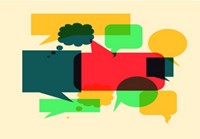Advertisement
Grab your lab coat. Let's get started
Welcome!
Welcome!
Create an account below to get 6 C&EN articles per month, receive newsletters and more - all free.
It seems this is your first time logging in online. Please enter the following information to continue.
As an ACS member you automatically get access to this site. All we need is few more details to create your reading experience.
Not you? Sign in with a different account.
Not you? Sign in with a different account.
ERROR 1
ERROR 1
ERROR 2
ERROR 2
ERROR 2
ERROR 2
ERROR 2
Password and Confirm password must match.
If you have an ACS member number, please enter it here so we can link this account to your membership. (optional)
ERROR 2
ACS values your privacy. By submitting your information, you are gaining access to C&EN and subscribing to our weekly newsletter. We use the information you provide to make your reading experience better, and we will never sell your data to third party members.
Science Communication
Scientists attempt brevity in their communications, with humorous consequences
by Bibiana Campos Seijo
September 16, 2019
| A version of this story appeared in
Volume 97, Issue 36
As C&EN is largely made of editors and writers, many on our team spend a lot of time thinking about scientific communication. Much of our working day revolves around how to communicate complex scientific notions in ways that make the science approachable and comprehensible without hyping it, oversimplifying it, or dumbing it down. It is a fine art and not an easy one, especially at a specialist publication like C&EN, where our audience—you—is largely discerning professionals and students of chemistry and adjacent fields.

We hone our skills over years and thousands and thousands of words of practice. This practice drills into us that a good story fulfills certain criteria: it needs to have a clear theme, and it needs to be balanced, informative, compelling, relevant, and accurate. Also, it should be focused and concise—why use 10 words if you can say it in 5?

These principles guide the daily work of C&EN’s journalists, but they are also relevant to scientists. Whether you work in academia or industry, you’re regularly producing all kinds of documentation, such as project status reports for management, grant proposals, and scientific papers. When writing these, scientists tend to do well at observing the criteria of a good story. One area where most of us stumble, however, is conciseness. In my experience, scientists—and I include myself—tend to be proponents, but not examples, of this “less is more” philosophy. Of course there are exceptions. I’d like to share with you a couple of examples of brevity taken to the extreme—with humorous consequences.
The first one is the abstract of a paper that was published by the Journal of Physics A: Mathematical and Theoretical (2011, DOI: 10.1088/1751-8113/44/49/492001). That abstract states, “Probably not.” Despite its brevity, or perhaps because of it, the paper has been downloaded more than 80,000 times and tweeted by just short of 7,000 people.
A two-word abstract is pretty extreme. But can we do better? Yes, we can. The abstract of a paper published in the Bulletin of the Seismological Society of America is a mere “Yes” (1974, 64, 1363).
Although the second example is shorter, my favorite is the first one because the authors cannot bring themselves to answer their own question authoritatively. Rather than a simple “No,” they opted for an inconclusive “Probably not.” Who said scientists cannot be brief—and funny?
Views expressed on this page are those of the author and not necessarily those of ACS.



Join the conversation
Contact the reporter
Submit a Letter to the Editor for publication
Engage with us on Twitter